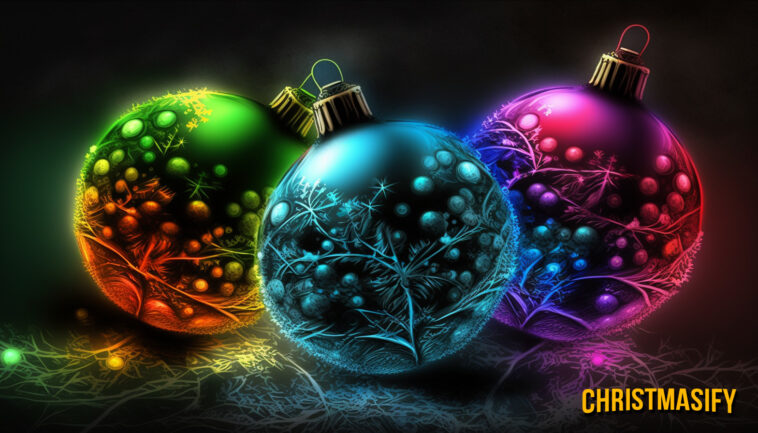Christmas is a season filled with warmth, joy, and love. An essential part of the holiday’s charm lies in its rich and vibrant colors, which not only bring festive cheer but also carry deep symbolism. In this article, we’ll explore the history and meaning behind the colors of Christmas, their significance in various decorations, and the traditions that have evolved around them.
History of Christmas Colors
Origin of Red and Green
Red and green are the most iconic Christmas colors. They trace their roots back to ancient times, when Romans celebrated Saturnalia, a winter festival honoring the god of agriculture. During this time, they would adorn their homes with greenery and exchange gifts wrapped in red cloth.
Another association between red and green and Christmas comes from the story of Adam and Eve. It is said that the red apples on the paradise tree symbolized the forbidden fruit, while the green leaves represented hope and new life.
Origin of Gold
Gold is another prominent color during the Christmas season, symbolizing wealth and prosperity. Its origin can be traced back to the story of the Nativity when the three Wise Men brought gifts of gold, frankincense, and myrrh to baby Jesus.
Symbolism of Christmas Colors
Red
Red signifies the blood of Christ, symbolizing sacrifice, love, and passion. It also represents the warmth and joy that surrounds the Christmas season.
Green
Green is a symbol of life, renewal, and hope. It represents the everlasting life brought by Jesus and the hope that the Christmas season brings. Green is commonly used in decorations like Christmas trees and wreaths, which symbolize eternal life.
Gold
Gold symbolizes wealth, royalty, and divinity. It signifies the gifts brought by the Wise Men and is often associated with the star that guided them to Bethlehem.
Silver
Silver is another color commonly used during Christmas, symbolizing purity and redemption. It’s often used in combination with gold to create an elegant and festive atmosphere.
White
White represents purity, innocence, and peace. It’s reminiscent of snow and the winter season, and it’s often used in decorations to create a serene and calming environment.
Blue
Blue, though not as common as other Christmas colors, symbolizes the Virgin Mary and her role in the Nativity story. It represents the night sky, tranquility, and faith.
Christmas Decorations and Traditions
Christmas Trees
The Christmas tree is a centerpiece of the holiday season, adorned with colorful ornaments, lights, and garlands.
Wreaths
Wreaths are a popular decoration during the Christmas season, made from evergreen branches and adorned with red ribbons, gold ornaments, and other festive embellishments. They symbolize the circle of life and the eternal nature of the Christmas spirit.
Ornaments
Ornaments come in various shapes, sizes, and colors, each carrying its unique meaning. Red and green ornaments bring warmth and cheer, while gold and silver ones signify wealth and purity. Blue ornaments can be used to represent the Virgin Mary and faith.
Lights
Lights are an essential part of Christmas decorations, illuminating homes and streets with vibrant colors. Red, green, and gold lights create a festive atmosphere, while white and blue lights evoke feelings of peace and tranquility.
Gifts
Gifts are a central element of the Christmas celebration, symbolizing the love and generosity shared among friends and family. Colorful wrapping paper, ribbons, and gift tags featuring traditional Christmas colors add to the festive ambiance.
Conclusion
The colors of Christmas are an integral part of the holiday season, reflecting its spirit and meaning. Each color carries its symbolism, and together they create a harmonious and joyful atmosphere. By understanding their history and significance, we can appreciate their role in our Christmas traditions and celebrations even more.
FAQs
- Why are red and green the most popular colors for Christmas? Red and green trace their origins to ancient Rome’s Saturnalia festival and the story of Adam and Eve. They symbolize love, warmth, life, renewal, and hope.
- What is the symbolism behind gold and silver during Christmas? Gold represents wealth, royalty, and divinity, while silver symbolizes purity and redemption. Both colors are often used to create an elegant and festive atmosphere during the holiday season.
- Why is blue sometimes associated with Christmas? Blue represents the Virgin Mary, the night sky, tranquility, and faith. Although not as common as other Christmas colors, it still holds a meaningful place in the celebration.
- What do white Christmas decorations represent? White symbolizes purity, innocence, and peace. It’s often used in Christmas decorations to create a serene and calming environment, reminiscent of snow and the winter season.
- Do different colored Christmas ornaments have specific meanings? Yes, different colored ornaments carry unique meanings. Red and green bring warmth and cheer, gold and silver signify wealth and purity, while blue represents faith and the Virgin Mary.

